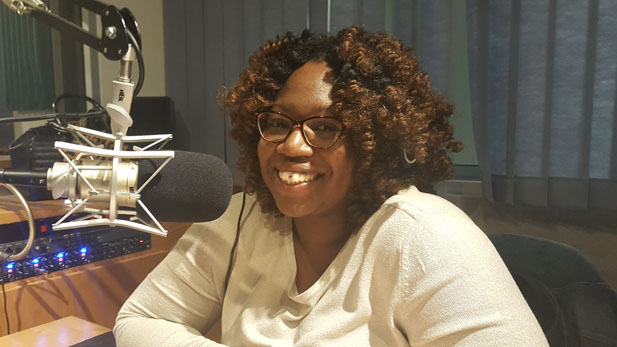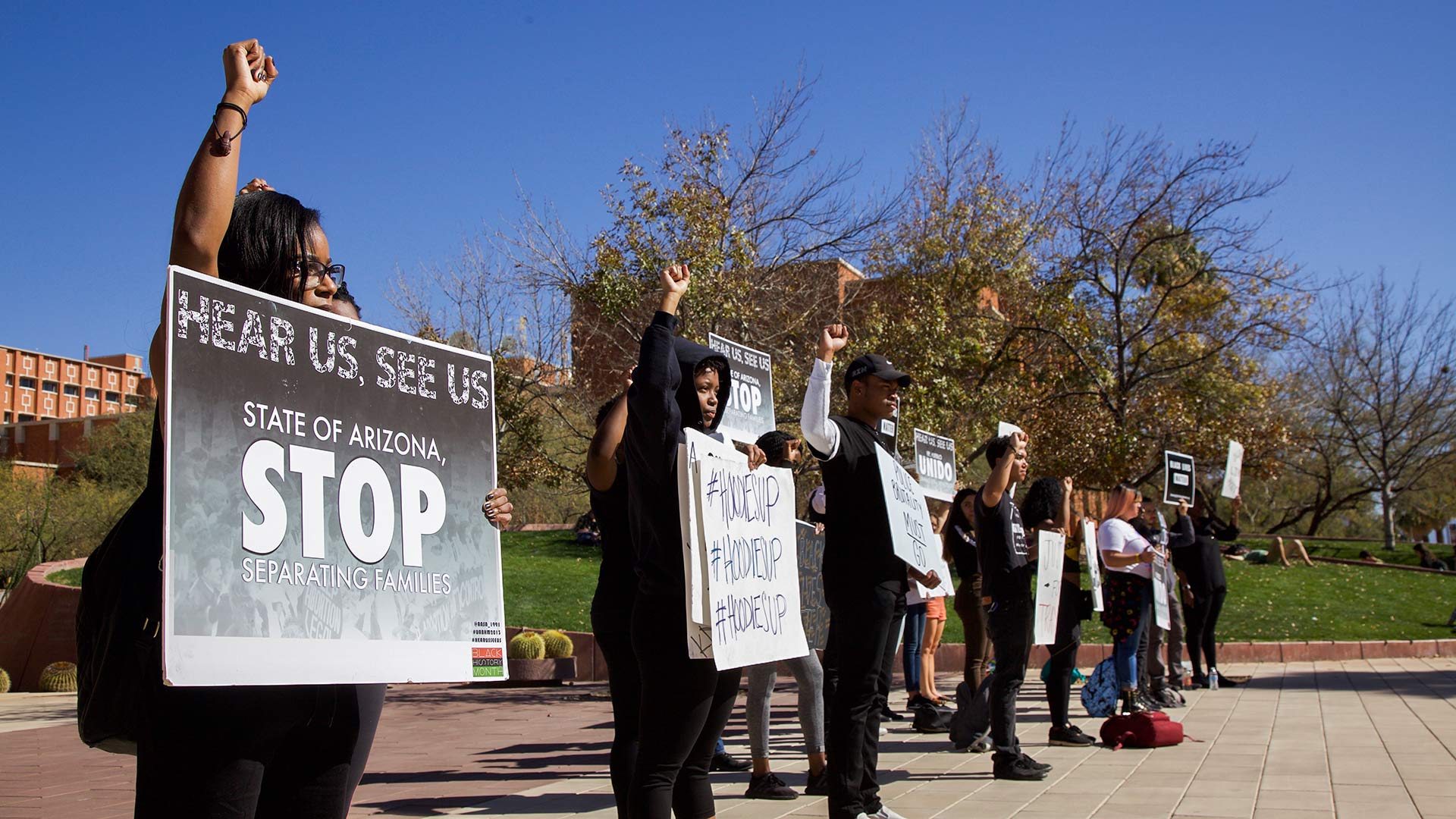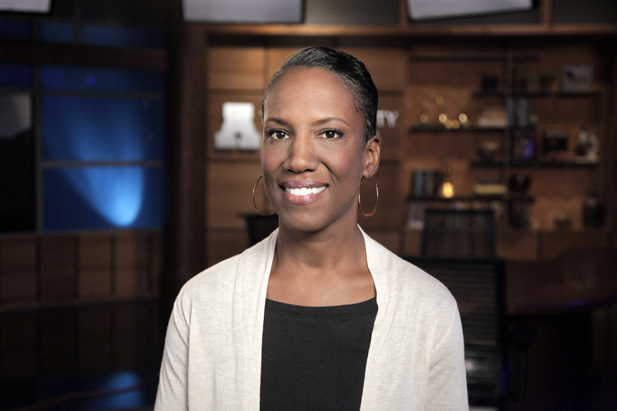 A silent protester at a Feb. 5, 2018 demonstration at the University of Arizona commemorating Trayvon Martin, who was shot and killed in 2012.
A silent protester at a Feb. 5, 2018 demonstration at the University of Arizona commemorating Trayvon Martin, who was shot and killed in 2012.
When you ask people what it means to be black in Tucson, you'll get a mixed bag of responses.
Tani Sanchez, an associate professor of Africana Studies at the University of Arizona, says it's "a knowledge that when people look at you, they see you and when they look away, you're invisible to them."
Mariah Barnett, a UA freshman studying political science, says it's knowing that "you're going to have to work 10 times harder than everyone else."
Hassan Farah, a physiology senior at the UA, says "it surprises you, everyday," to look around and see "two, maybe three" black people around you.
And Adiba Nelson, a children's book author and burlesque performer, says, "sometimes, you just kind of feel like a unicorn."
It's not really news that Tucson has a relatively small black-identifying population. Census data compiled by StatisticalAtlas.com shows that only 3.6 percent of the million people living here identify as black. Arizona, as a whole, isn't much better — only 4.2 percent of the state's population identifies as black.
Percentage of the total population.
Scope: population of Arizona (thin line) and the Tucson Area (thick line)
But what does that number — 3.6 percent — really mean, for black Tucsonans like Sanchez, Farah, Barnett and Nelson? How does it affect the ways in which they build like-minded community and navigate their day-to-day lives?
The answers to those questions aren't exactly black and white, according to the 15 black Tucsonans interviewed for this story . Each person voiced their own ideas about what it means to be black in a place where most people identify as white or Hispanic on census forms. Sometimes their opinions differed greatly, but more frequently, they shared common threads.
Lola Rainey, a community organizer with Black Lives Matter Tucson, says a 60-year-old Tucson native probably won't view their black experience here the same way a 30-year-old transplant does. And the aforementioned native and transplant will probably perceive it much differently than a teenager or 20-something, native or not.
"The older generation, they're still very much wedded to things like the churches and fraternities," Rainey said. "And I think with the younger generation, they come together around things that they can create [on] social media."
 Adiba Nelson in the AZPM radio studio, 2016.
Adiba Nelson in the AZPM radio studio, 2016.Adiba Nelson, the author and burlesque performer, moved to Tucson from New York City in 1988. She says it took her most of her adolescent and adult life to feel out where she fit into Tucson's black community.
Nelson is biracial, half Puerto Rican and half black. She identifies as Afro-Latina. She says she didn't really think about how other people perceived her race and ethnicity until shortly after she moved to Tucson. She was 12 when "it" — what it means to be black in America — really hit her. That's when she was first called the N-word.
She was waiting at the bus stop with some friends when it happened. Two men in a pickup truck pulled up next to them at the stoplight.
"I'll never forget, they had a gun rack in the back window of their truck," Nelson said. "With a rifle! And he looked at me and goes, 'What are you looking at, you f---ing n---er?'"
She says at that moment, her mind raced and her body froze. She didn't know what to do or say.
"I just looked down," Nelson said.
At that moment, her mind raced and her body froze. "I just looked down."
Nelson says as she got older, she became more conflicted about what it meant to identify as black and Latina. She remembers filling out practice census forms, as a kid, and feeling confused about which race and ethnicity boxes she should check.
She concluded she couldn't check any box. She didn't feel like she really fit into any one of the provided categories.
"Because I'm not just black, I'm not just Hispanic," she said. "And I'm not black, not of Hispanic descent. So I'm just gonna leave it blank."
To the outside world, Nelson always felt she was "just black." Nobody could see her Latina identity, she says, because they couldn't imagine Latinas could also have dark skin.
This created a deep conflict for Nelson. She was raised by her Puerto Rican mother and says she always connected more with her Latina roots. She came of age in the '90s, speaking Spanish, watching Sábado Gigante and listening to Johnny Ventura with her cousins — not wearing color-blocked shirts and listening to Biggie Smalls, like the other black kids her age.
She tried getting involved in the African American Culture Club at Tucson High, she says, but that only made her feel like the odd one out among her black peers. She didn't feel, in her words, "black enough."
That feeling of otherness stuck with Nelson throughout most of her adult life. She says the insecurity still sometimes creeps into her mind.
"I have my core group of sistas. That's my group, that's my heart. And I know I will always be accepted, amongst them," Nelson said. "But I find that when I'm in a larger group of black girls that I don't know, I often feel so awkward. And I feel like that 12-year-old girl again who's trying to fit in, and who doesn't necessarily fit in."
Mariah Barnett, the UA freshman, relates with Nelson. She, too, identifies as biracial — half black and half white.
Being black and white has caused her, at some points, to self-evaluate and judge to the point of identity crisis, she says.
"I went to high school with all white people where I was too black, too ghetto," Barnett said. "And then I came here and sometimes people will say things to me like: 'Oh, that's the white side in you. You wouldn't get it, you're white.' So it's really hard to figure out who I am, when everyone is always telling me."
Unlike Nelson, though, Barnett resonates more with her blackness, and always has. The political science student says, at the end of the day, that's how non-black people have always perceived her, anyway: just black.
"What does being half-white mean in America? It means black," she said. "Doesn't matter if you're 25 percent white, or 75 percent white — if you just have that one drop of black in you, you're black. And they're gonna treat you as such."
Barnett went to Marana High School. There, students openly called her the N-word, told her to go pick cotton and threw pencils at her hair. The day-to-day racism she experienced at school worsened her senior year, though, during and after the 2016 presidential election.
"I went to high school with all white people where I was too black, too ghetto. And then I came here and sometimes people will say things to me like: 'Oh, that's the white side in you. You wouldn't get it, you're white.' So it's really hard to figure out who I am, when everyone is always telling me."
Some white students waved Confederate flags at traffic before and after school. They wore the flag draped around their shoulders during classes. They used nasty, racist language more than ever before.
This made going to school mentally draining, for Barnett, and she decided to do something about it. She told school administrators about the injustice she was experiencing on a daily basis.
"If something like that is happening," the aspiring civil rights lawyer said, "I'm not one to bite my tongue on it."
Her outspokenness drew a target on her back. Marana High principal David Mandel ended up banning the Confederate flag on campus, and some pro-flag students blamed Barnett for it. They, in turn, started harassing her, in person and online.
"[They tweeted] things like, ‘No one calls you the N-word, you're just making this up for attention.' And, ‘If you're afraid to walk to your car in Marana, Arizona, because of racists, you need to stop being a p----y.' And just a lot of really mean things like, ‘No one likes you.'"
Hassan Farah, the president of the UA Black Student Union, says he, too, has been the target of racist jokes, insults and remarks throughout his time living in Tucson, especially at school. He says some of his peers at BASIS Tucson North would say he was the "whitest black kid," or that he wasn't "really black."
The discrimination took a different form, Farah says, when he started going to the UA. He says administrators routinely ignore black students activists' calls for better inclusion.
"It does a lot of damage to your psyche to be able to say, like, ‘Is this even possible?'" he said.
 University of Arizona students associated with the Black Student Union hold a silent protest Feb. 5, 2018 with signs reading "Black Lives Matter," "#Hoodiesup" and "State of Arizona, Stop Separating Families."
University of Arizona students associated with the Black Student Union hold a silent protest Feb. 5, 2018 with signs reading "Black Lives Matter," "#Hoodiesup" and "State of Arizona, Stop Separating Families."Farah says he didn't find his own black community until the last couple years at the UA. When he did stumble upon it, he realized he had been subconsciously seeking it out his whole life.
"To be part of this, to be welcomed into this group, was pivotal to my growth," Farah said. "It makes you look and see, OK, this is what it's all about. There are students here, like me, who are going through the problems that I'm going through."
Community alone isn't always enough, though, he says. Being one of the few black people in mostly a white space can queue significant anxiety and self-judgement.
"To be part of this, to be welcomed into this group, was pivotal to my growth. It makes you look and see, OK, this is what it's all about. There are students here, like me, who are going through the problems that I'm going through."
"I mean, you sit in your classes and there's 300 students, and you don't want to seem like you're uneducated, so you sit in the front row," Farah said. "You're, like, performing for everybody else in the room, to combat a stereotype you think they have of you.
There's so much work that you do, everyday, as a black student in these white spaces that you don't really recognize until you start talking to black students about it."
 Debi Chess Mabie, 2014
Debi Chess Mabie, 2014Debi Chess Mabie is a UA College of Social and Behavioral Sciences community impact fellow. She is working with the Dunbar Coalition to restore Tucson's only historically segregated school, the Dunbar School, into a cultural center focused on Tucson's Black community.[3] Chess Mabie agrees with Farah. It can be tiring to live in majority-white spaces, like Tucson, if you're black.
"It's exhausting," she said, "because you kind of just want to be able to walk down the street, go to the grocery store, go to the club, and not think about it — you know, not think about whether or not you're going to see folks who look like you or have shared interests with you."
Chess Mabie says here in Tucson, if you want to find a circle of like-minded black friends, you have to be intentional about it. There's no room for being passive, introverted or shy.
This was an adjustment for her. Before she moved to Tucson, she lived in Chicago.
"In Chicago, you know, you can be a shy introvert, and just by the nature of where you live, you come in contact and are bound to have conversation [with other black people]," she said. "But here? You have to socialize.You have to get out. You have to."
"It's exhausting, because you kind of just want to be able to walk down the street, go to the grocery store, go to the club, and not think about it — you know, not think about whether or not you're going to see folks who look like you or have shared interests with you."
Chess Mabie finds community through the Dunbar Coalition and other groups focused on black people and their experiences. She says if you want to see black culture represented in spaces outside those created specifically for black people, though, you have to get out of Tucson.
She realized this a couple years ago, when she took her kids to a Phoenix Art Museum exhibit featuring work from Kehinde Wiley, the acclaimed Brooklyn-based artist who painted Barack Obama's presidential portrait.
"They saw these regal looking African-American people, African people, African diasporic people, that looked just like them. It was so affirming of who they are," Chess Mabie said. "And my daughter says, ‘Why do we have to drive all the way to Phoenix to see this?' I don't know. Why do we have to drive?"
UA Africana Studies professor Tani Sanchez says this is how it's been in Tucson ever since she has lived here. She has spent most of her life in the Tucson metro area, give or a take a few moves. Sanchez has published books documenting her family's deep history in Tucson. Her research — and her experiences growing up here in the '70s — show it wasn't as hard to find black community in the past as it is today.
Sanchez says it was connected, back then, in a way it's not today. "Segregation was just ending," she said. "So you still had all of these black clubs doing tea parties and other functions, and that still goes on today, but there was more a sense of knowing people."
Sanchez agrees with Chess Mabie: You have to get out of Tucson and Arizona, in general, if you want to find displays of black and African-American culture without exerting a lot of effort.
She says moving, for a time, to New Orleans — a city that's almost 60 percent black — was one of the most affirming experiences she has ever had, in terms of her identity. "It was kind of a turning point — not in terms of understanding hypocrisy or racism, because how can you escape that if you're black?" Sanchez said. "But just in terms of looking at what it's like to live in an extended period of time without that racial pressure. I was much less worried about people being able to see a black person as a human being and recognize whatever qualities they had. Good or bad."
"I was much less worried about people being able to see a black person as a human being and recognize whatever qualities they had. Good or bad."
Sanchez, Chess Mabie, Farah, Nelson and Barnett all say that despite the racism and feelings of isolation they've experienced here, they still like living in Tucson. They feel at home here, and they've found their spaces in the community. No matter how complex and, at times, exhausting that process can be.
But they each shared a piece of advice for other black people considering moving here. As Sanchez puts it:
"If you have never lived in a predominantly white setting, you're going to have severe culture shock. You're going to realize that people have no idea about what black history entails. They have no idea about what white history entails, for that matter. They do not recognize obvious acts of racism, and that is not limited to just one race. There are many people who do not understand or appreciate black people."

By submitting your comments, you hereby give AZPM the right to post your comments and potentially use them in any other form of media operated by this institution.